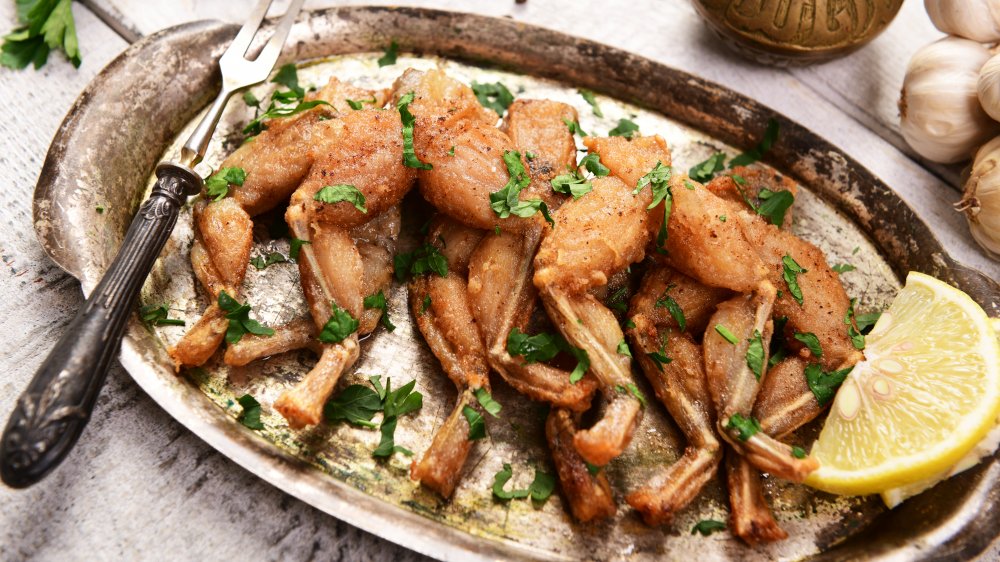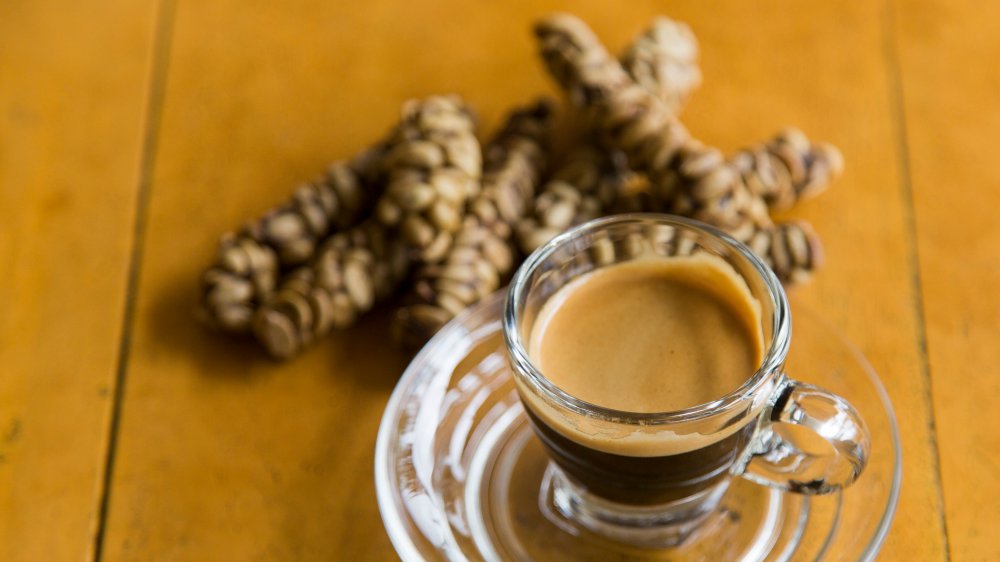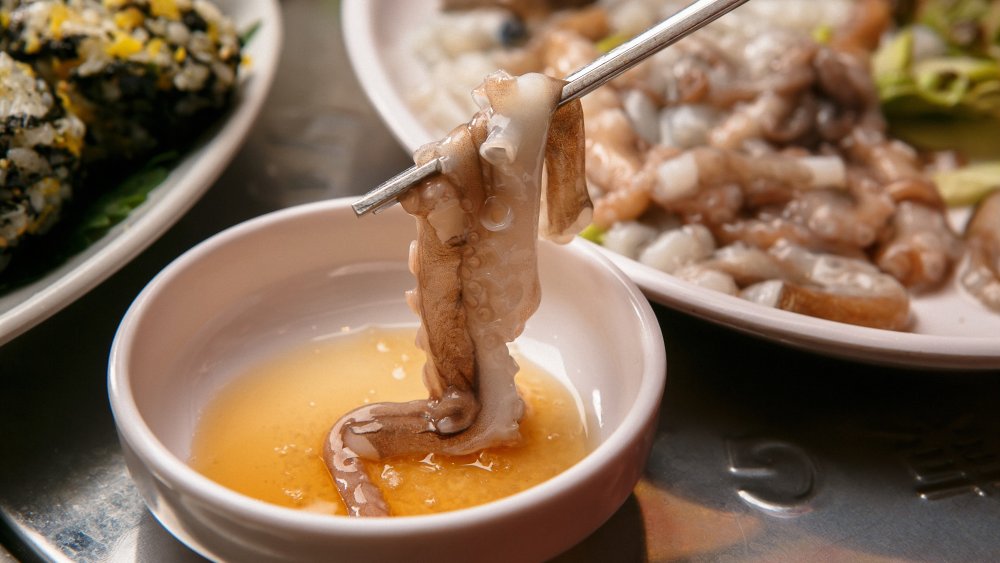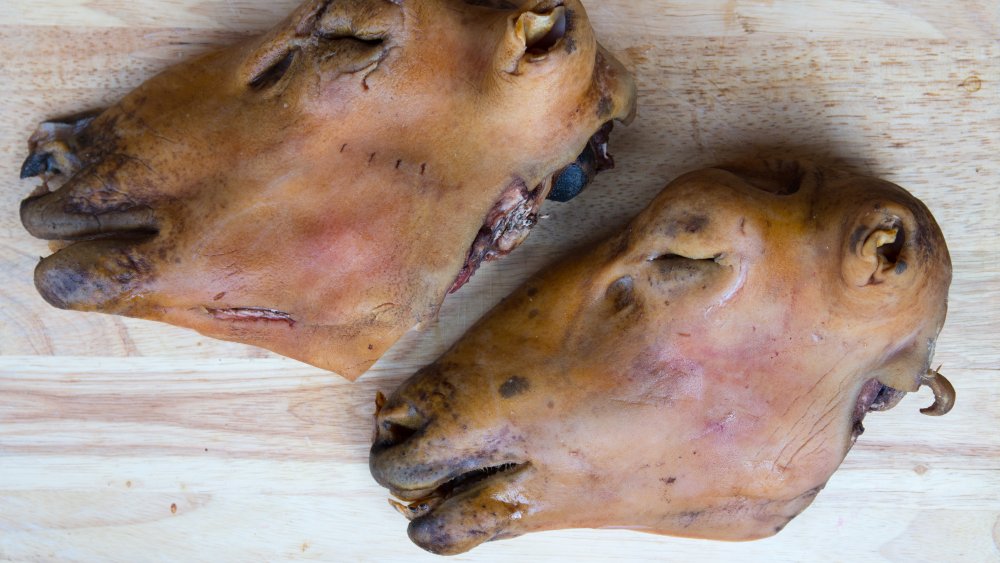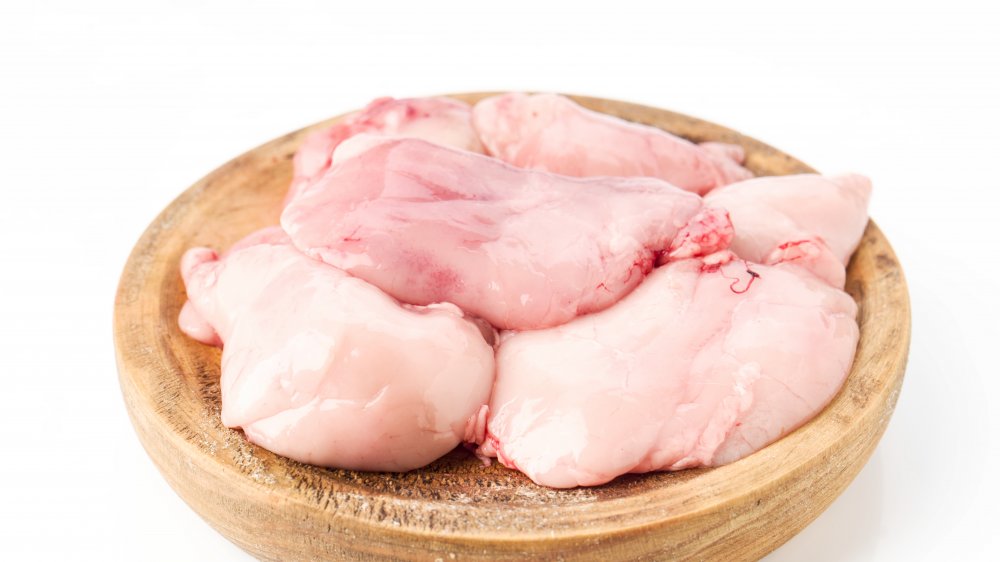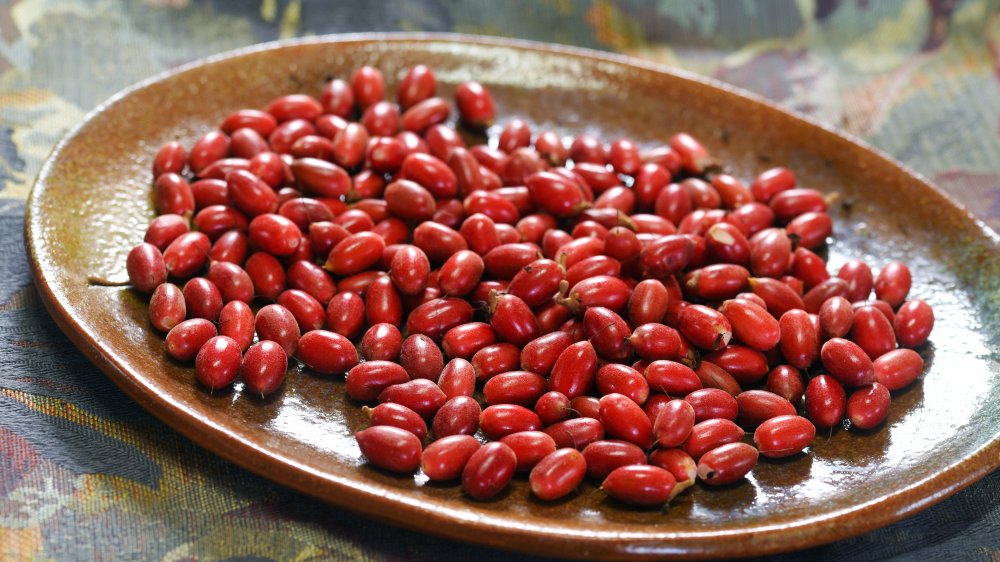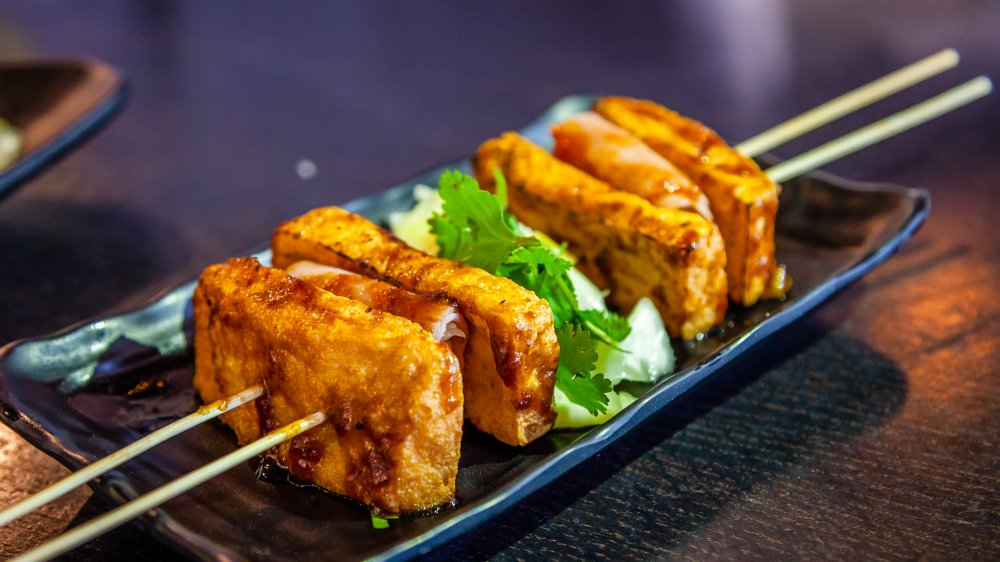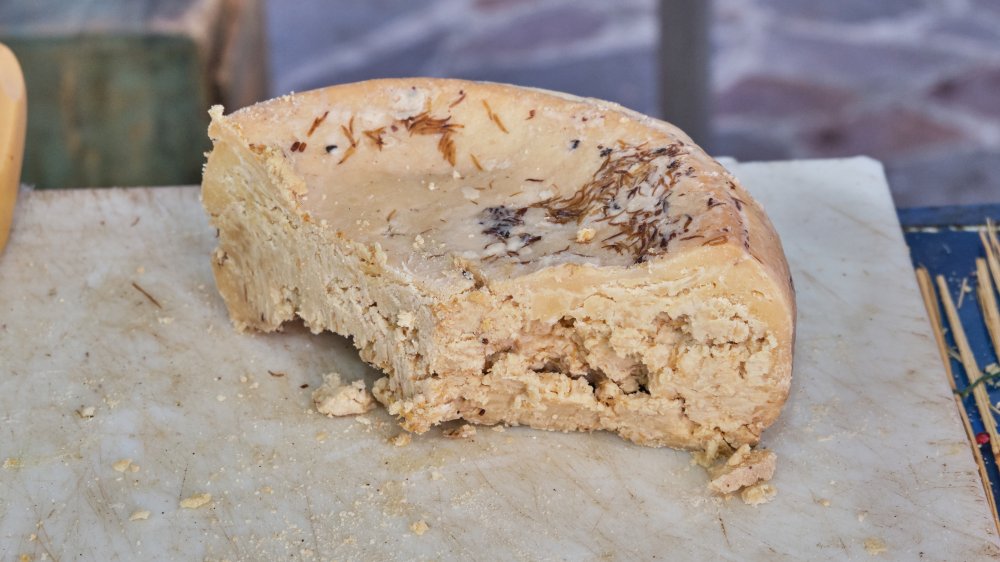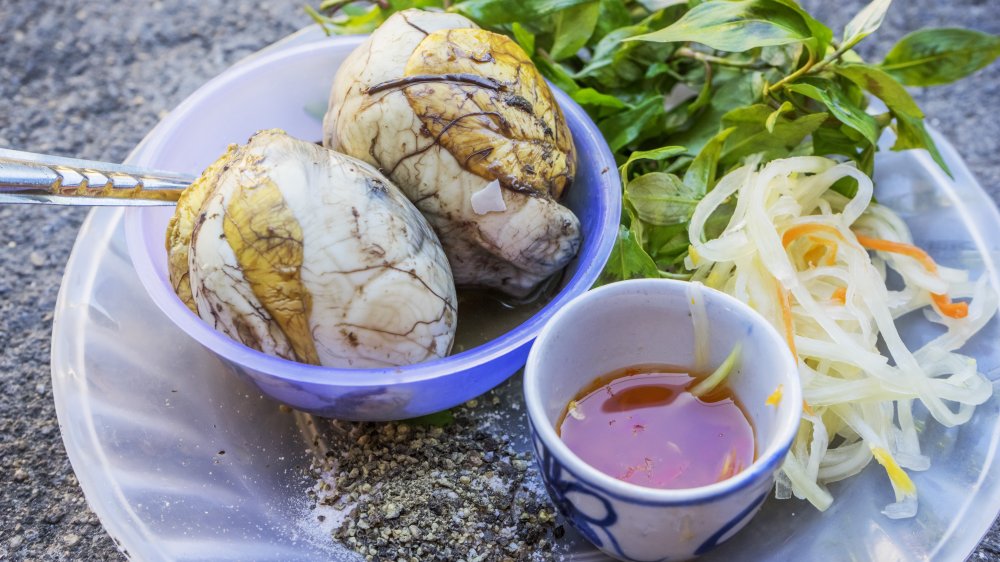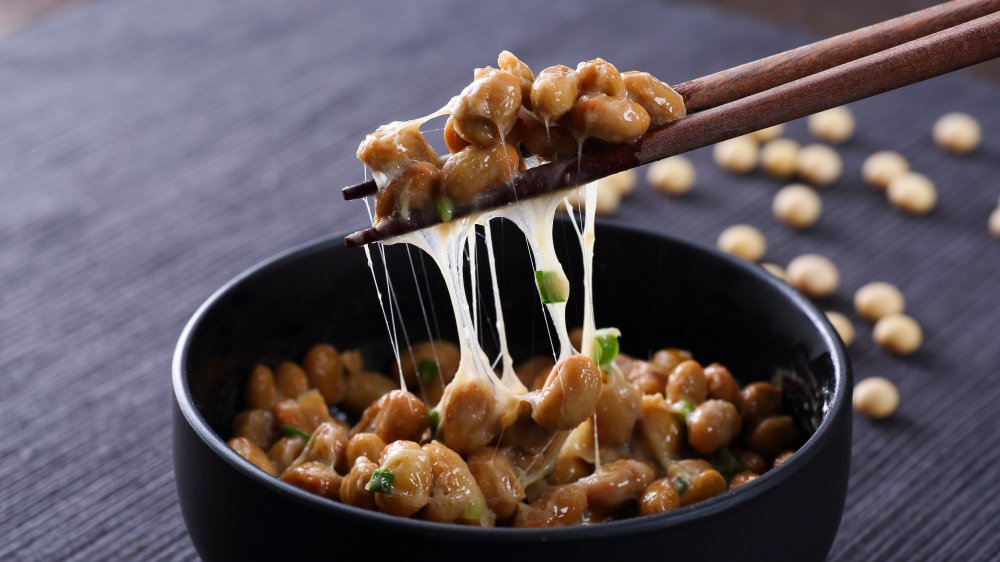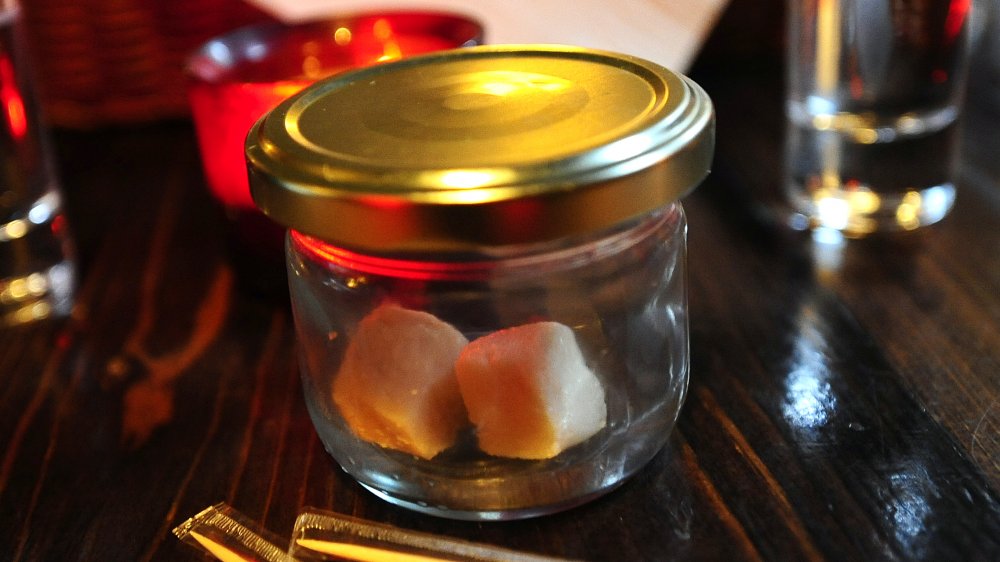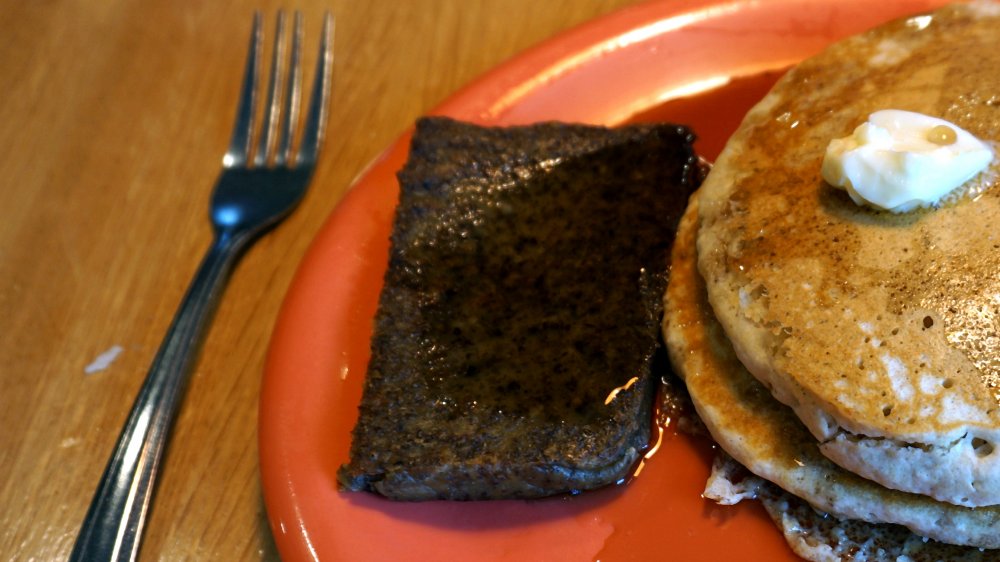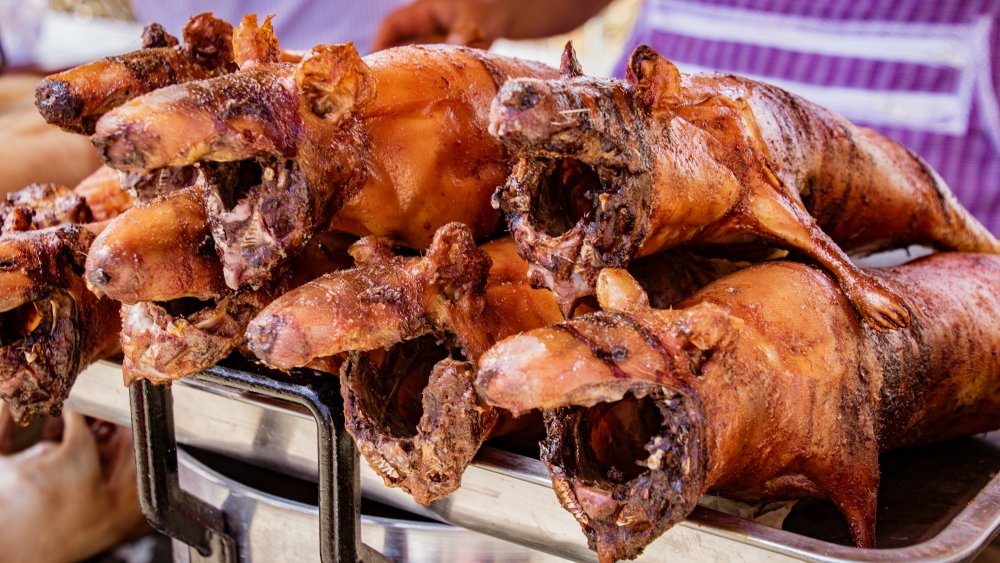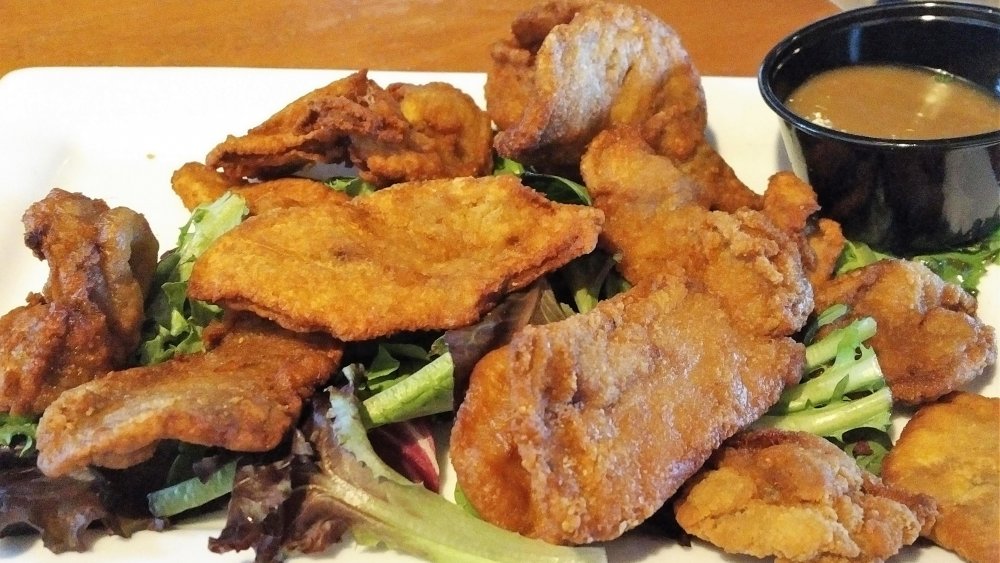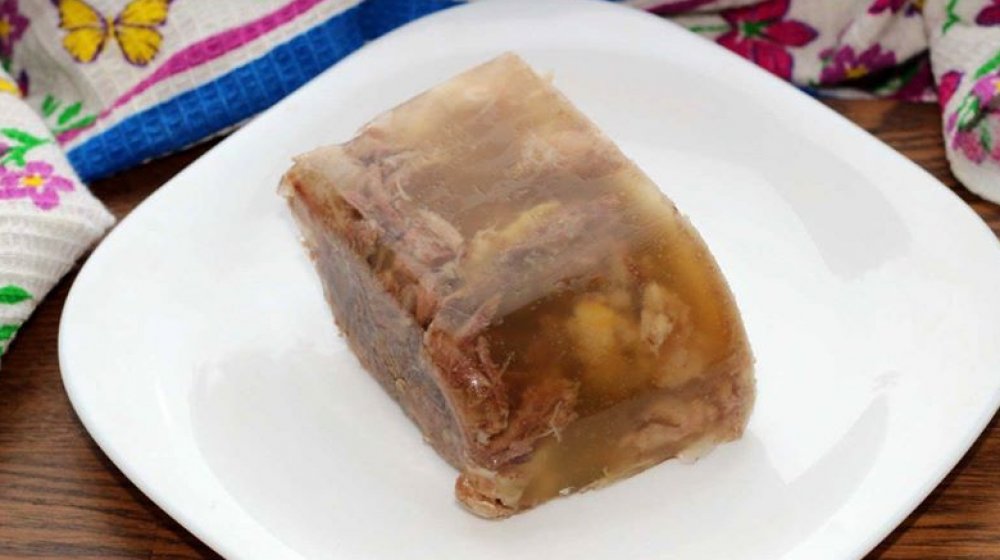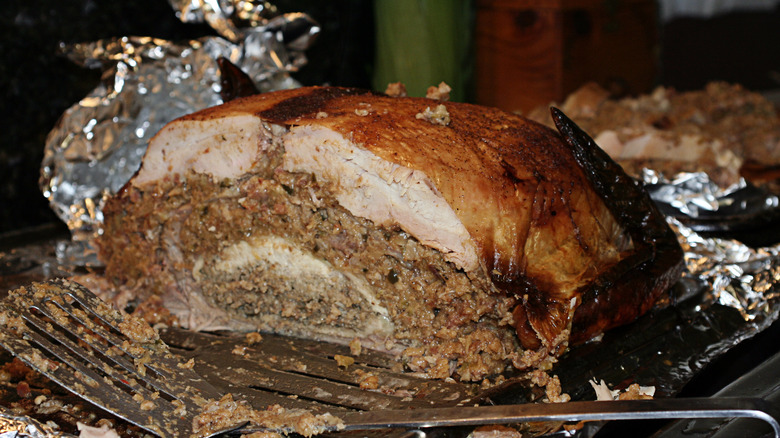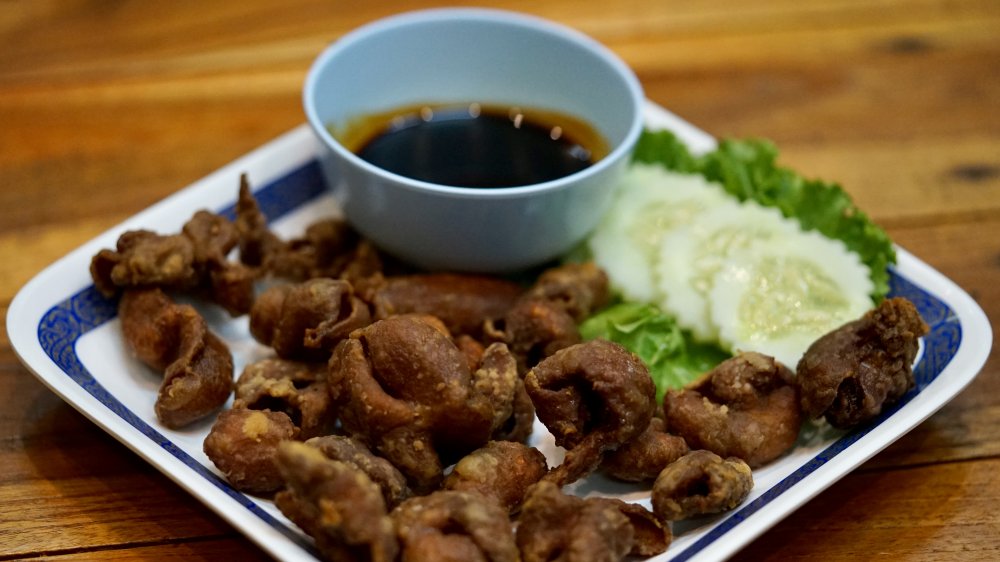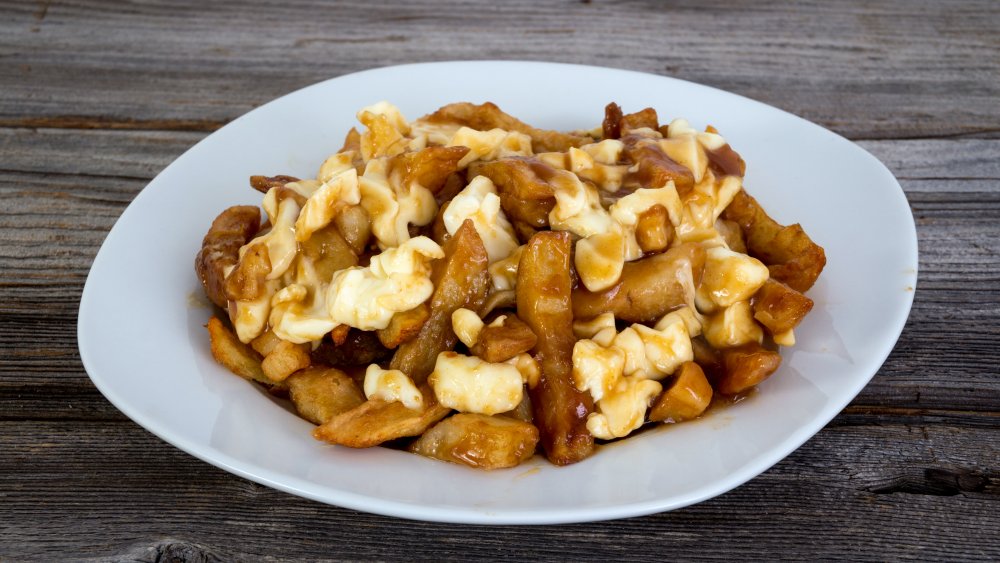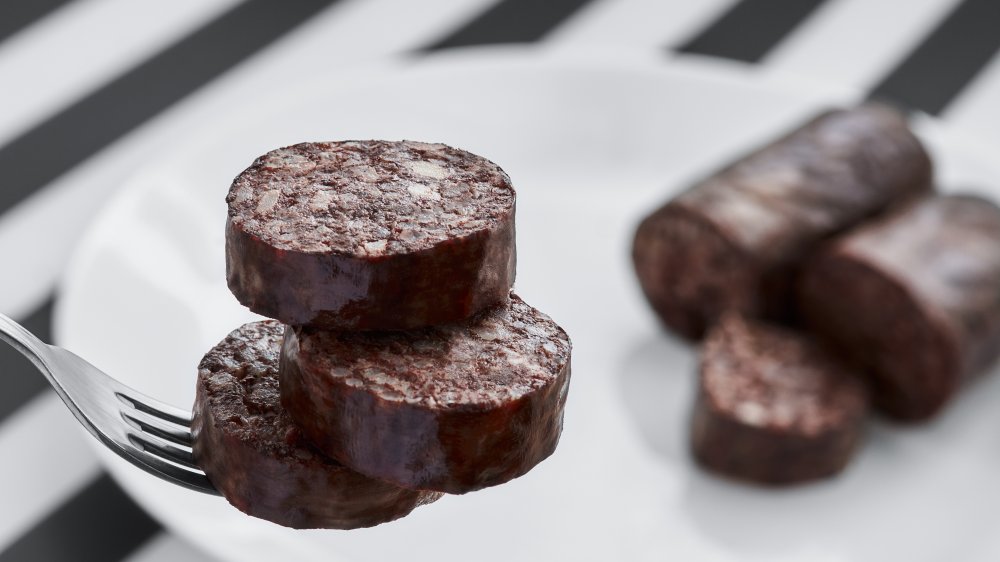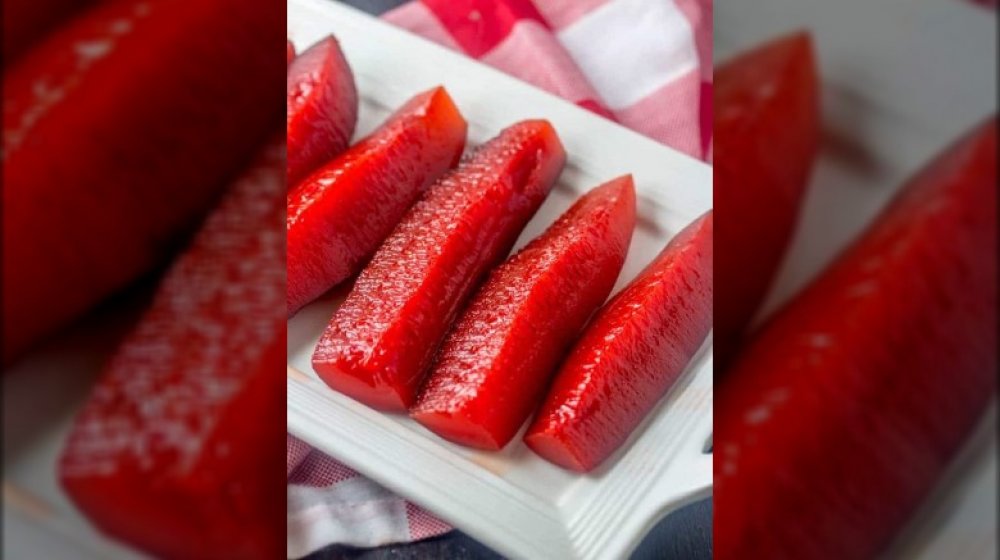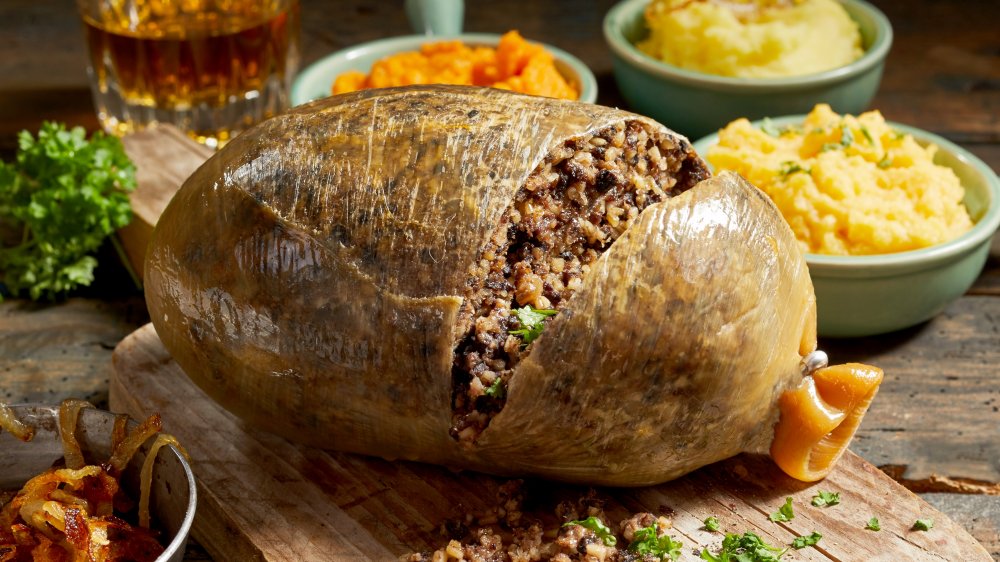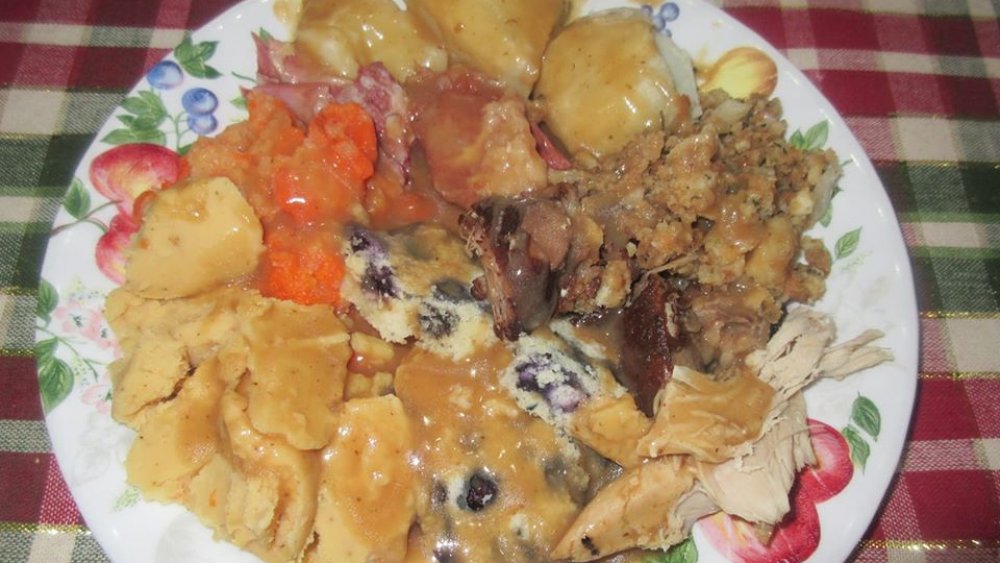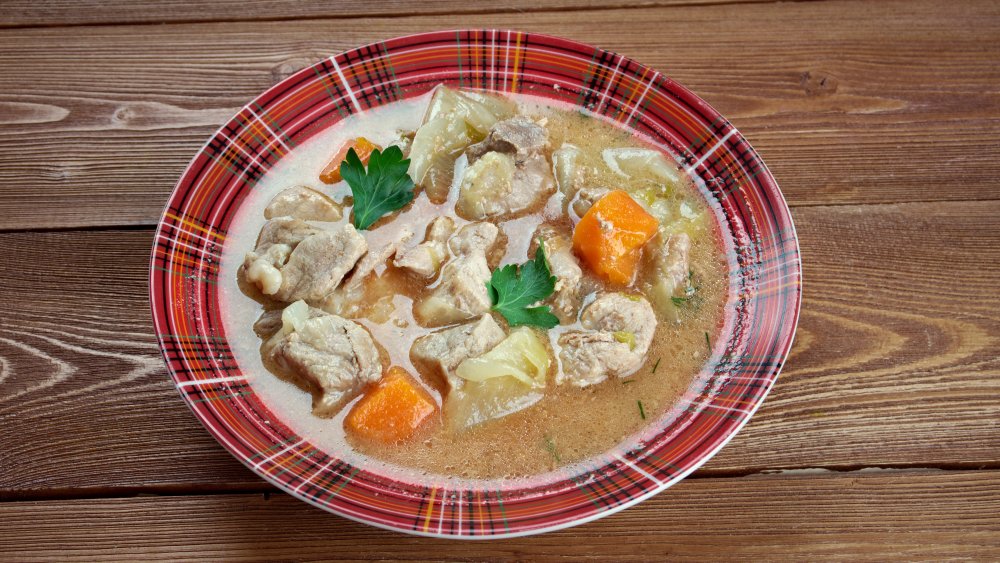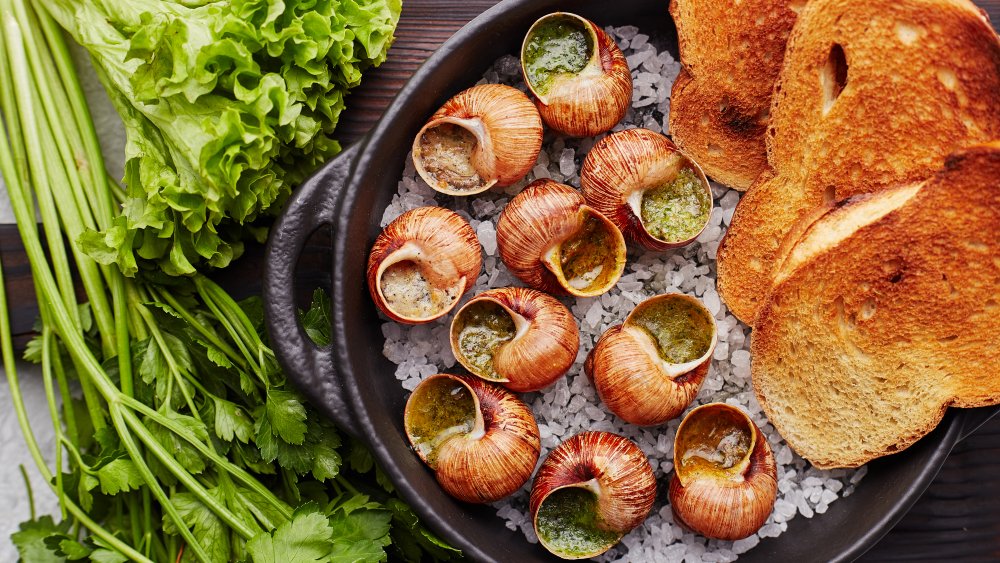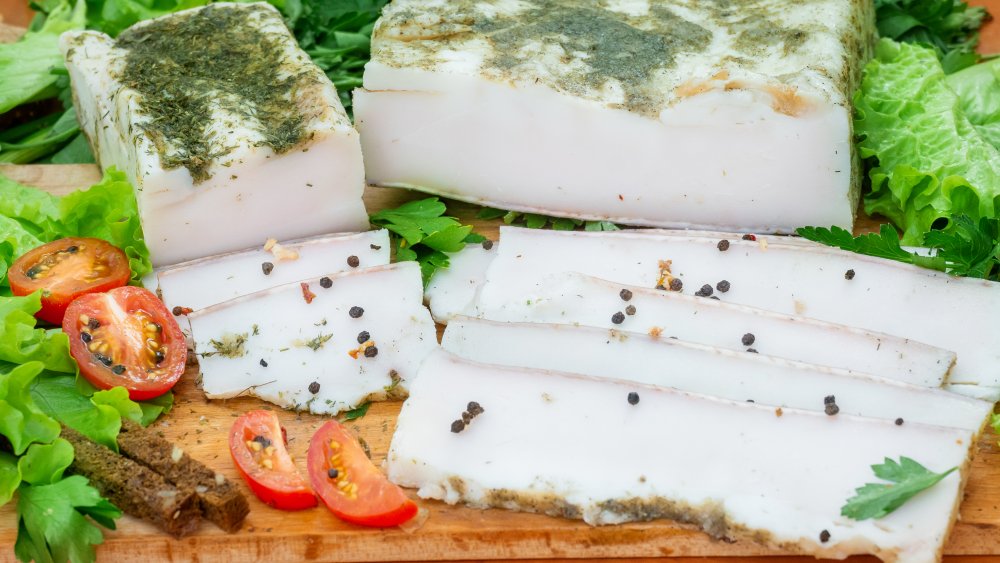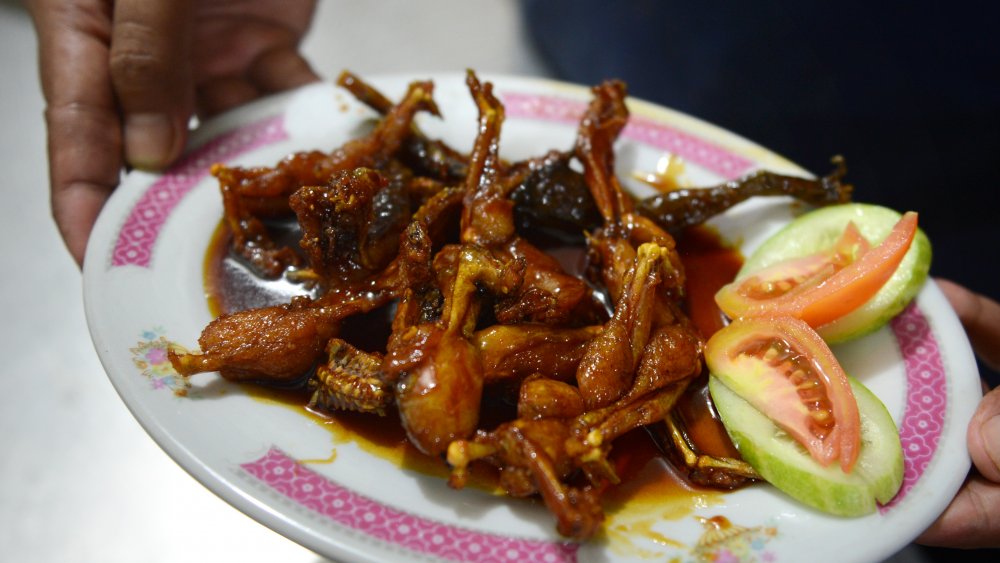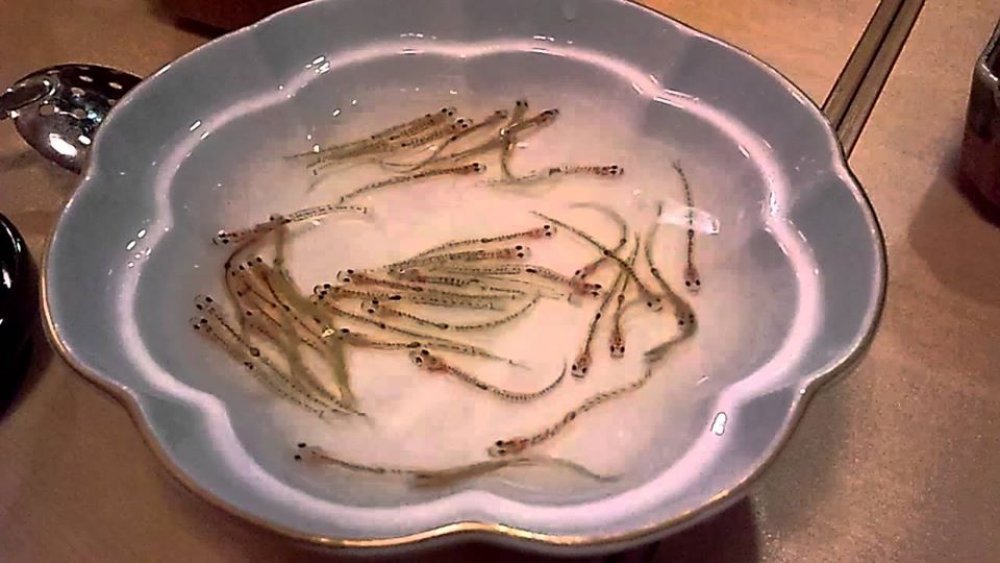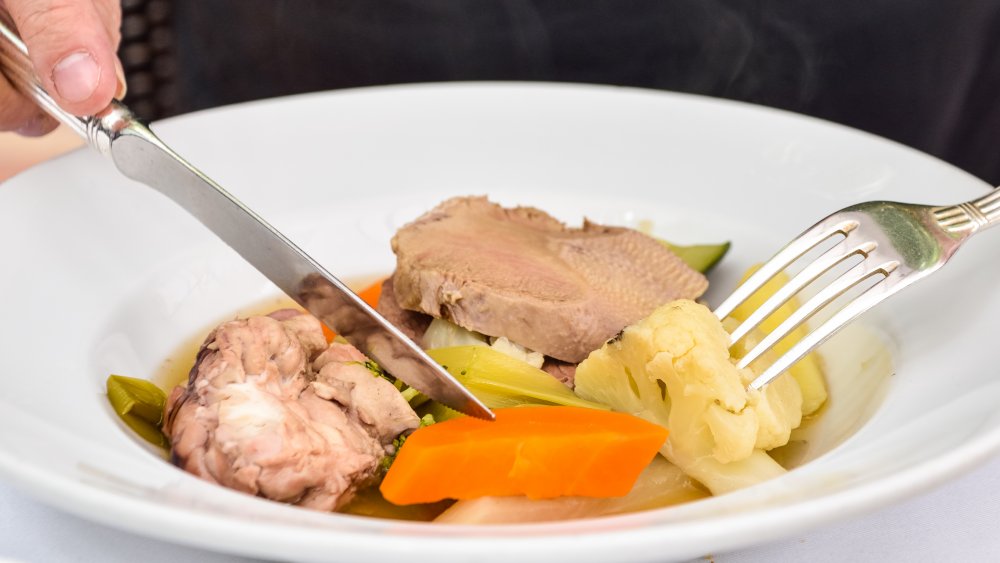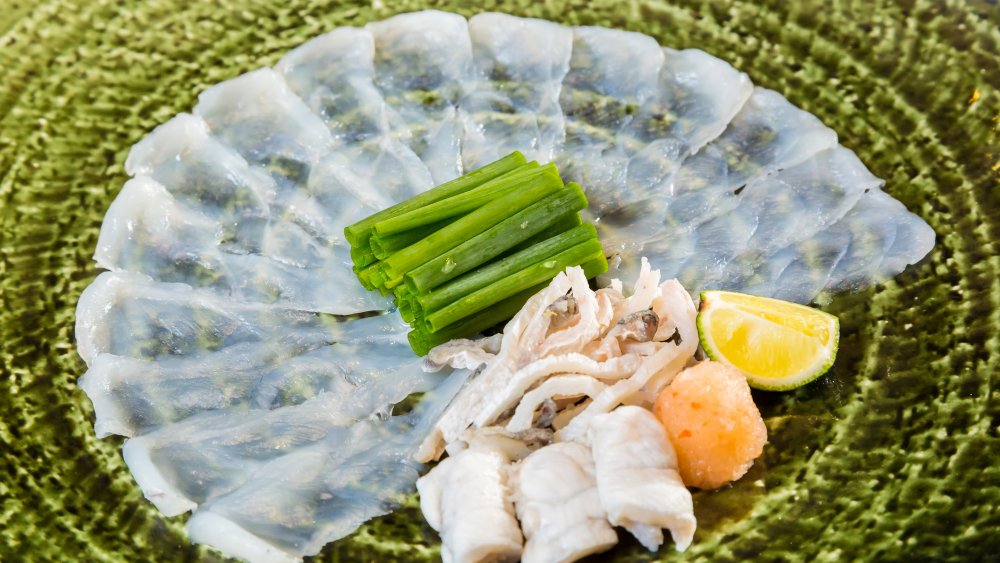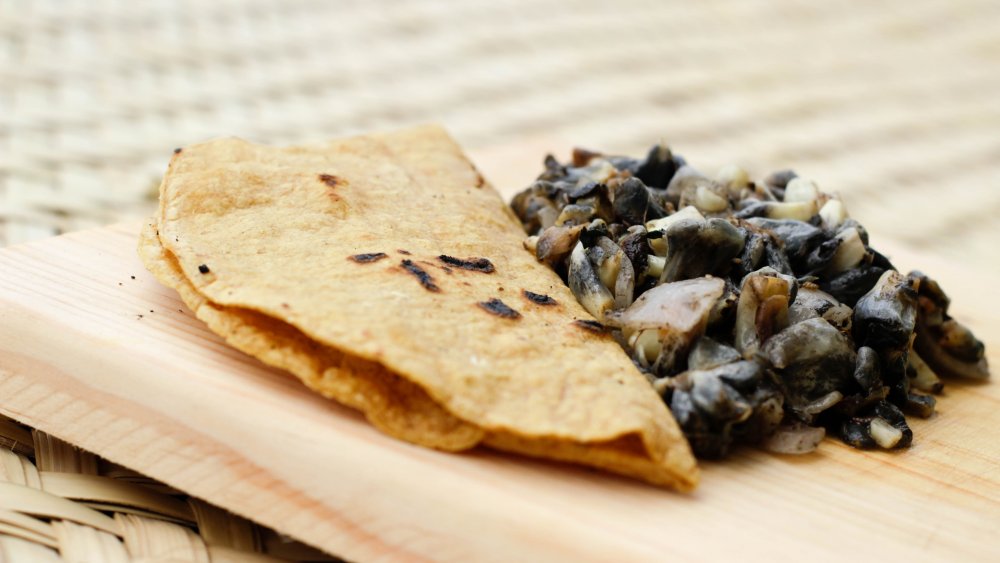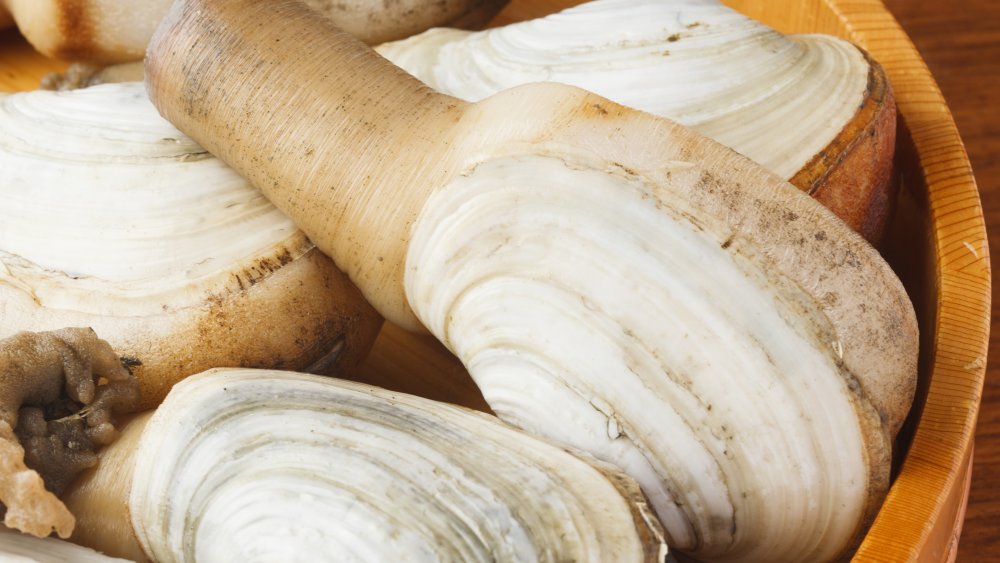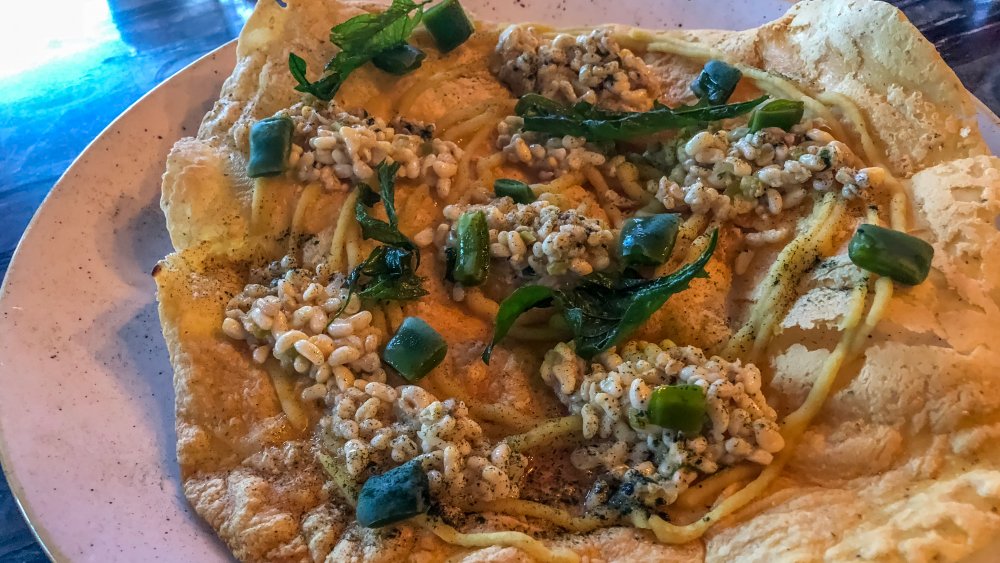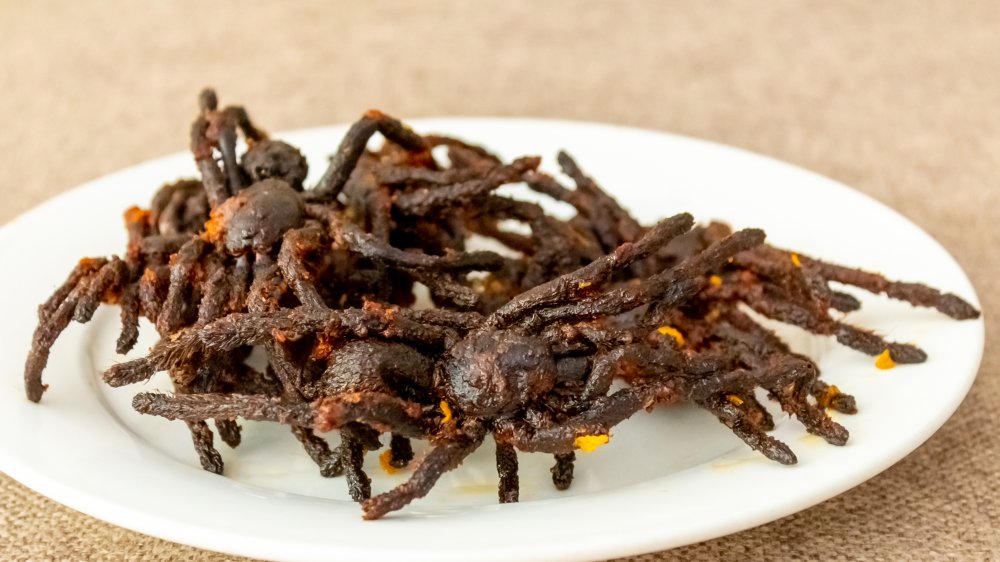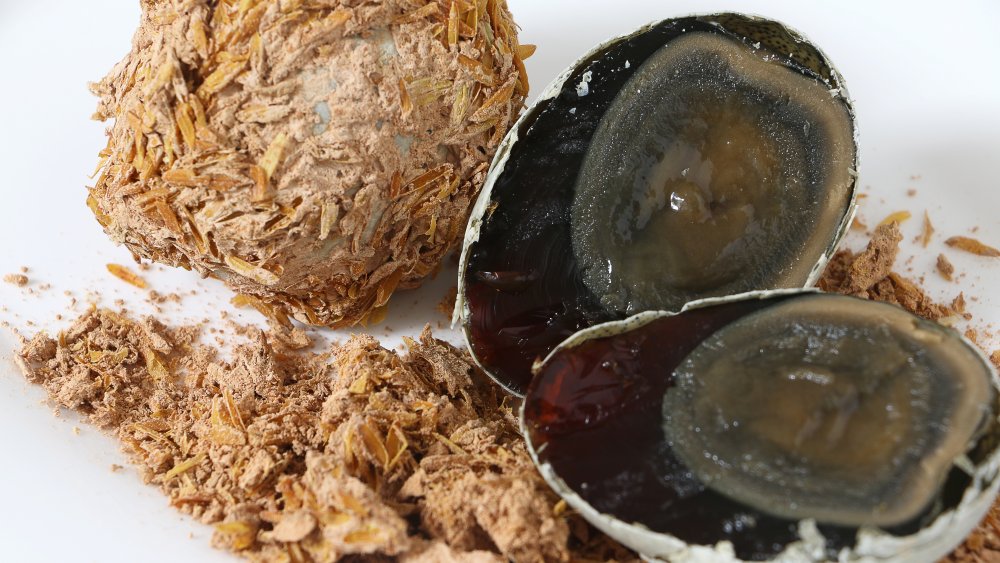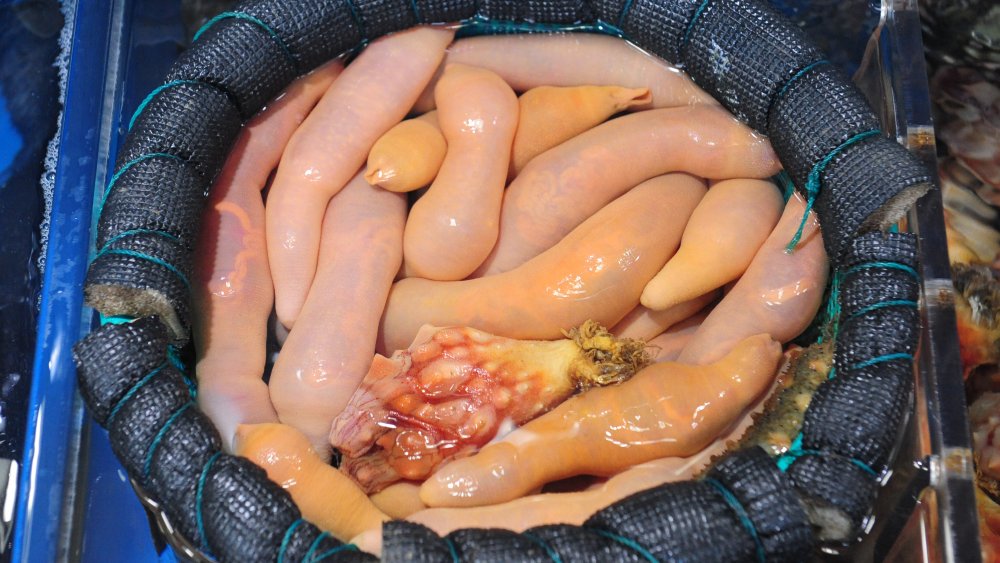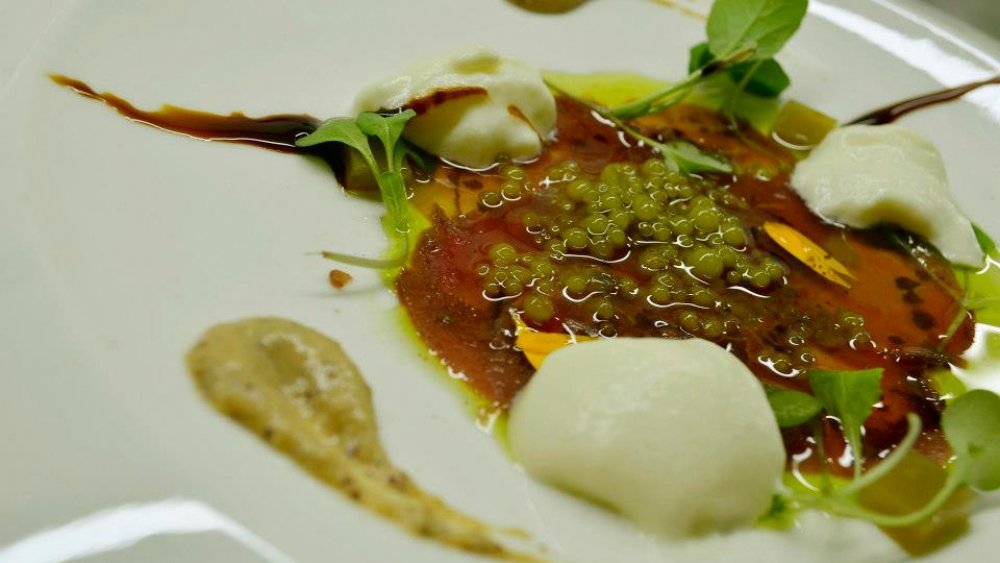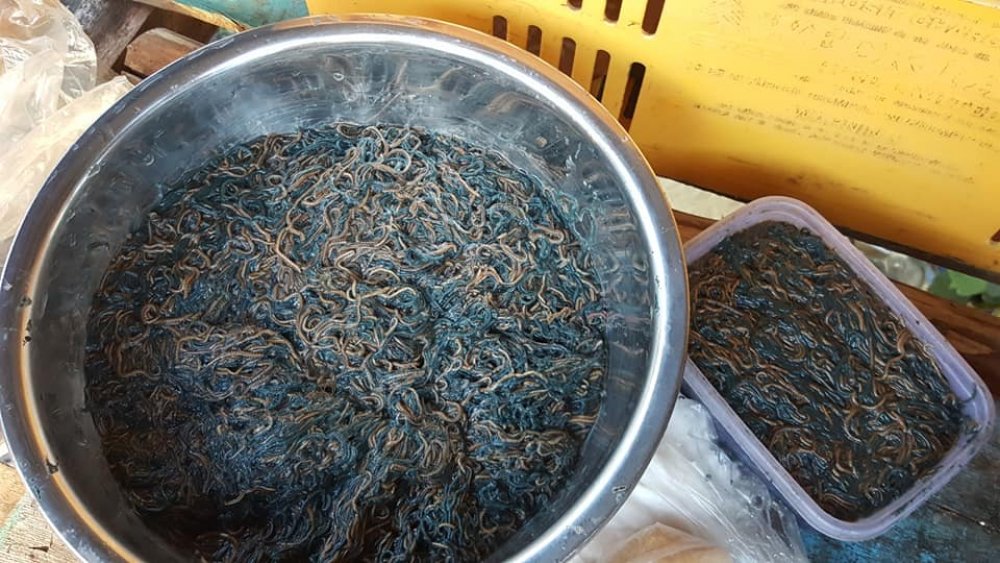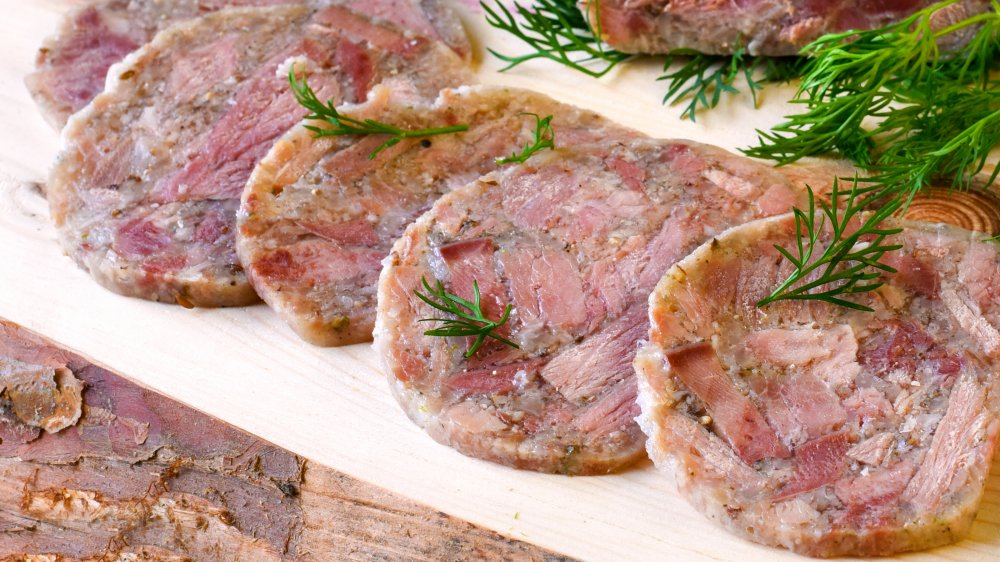40 Bizarre Foods You Need To Try Before You Die
There are some foods so bizarre, we're not sure that you need to try them in order to get your certified culinary adventure card. Sure, you *could* try warthog anus, but considering that Anthony Bourdain said that it was the worst meal of his life (the anus was filled with sand, fecal matter, and dust), why bother?
Instead, try seeking out some unusual foods that have been prepared a little more carefully. Sure, fermented shark might reek and taste, well, terrible, but it's a food that's been painstakingly hunted, fermented, and dried, and enjoyed for hundreds of years, so why not try it?
Then there are the bizarre foods that might surprise you with their delectable flavor. Sweetbreads might sound strange (what the heck is a thymus gland?) but they're considered a great delicacy, and the same can be said of cat poop coffee, made from coffee beans digested and excreted by civet cats.
These are the bizarre foods you need to try before you die.
Civet coffee
If you're a fan of expensive and exotic coffees, maybe you've heard of Kopi Luwak — also known as civet coffee. Some say it's the best coffee in the world, and it's certainly expensive, but what exactly is it?
It's a coffee that's harvested like no other. Civet cats actually eat coffee cherries, then, well, poop them out. The coffee beans are then taken from the scat, washed, roasted, ground, and brewed, to make a coffee that's not only expensive (expect to spend between $100-$500 for a pound of the stuff), but also apparently pretty tasty, thanks to the fact that civet cats only eat the ripest coffee cherries, and because their digestive enzymes work on the coffee beans to eventually produce a smoother brew.
Unfortunately, there is some worry about how humane the process of making civet coffee is. While the more expensive civet coffee is made using coffee beans taken from the poop of wild civets, the slightly cheaper stuff is made from civets that are held in captivity and forced to eat coffee cherries.
If you want to try civet coffee, look for shops or sellers that use the kind produced by wild civets. It may cost extra, but it's worth it to know that the animals aren't being mistreated.
Live octopus sushi
Octopus sushi ranges in quality here in the U.S. Sometimes it's rubbery and chewy, other times it's tender and buttery. But if you really want to have a transcendent Octopus sushi experience, you need to head to Korea, where you can try sannakji.
Sannakji is "wriggling octopus," and it's pretty much the freshest octopus you can eat. A chef takes a live young octopus, cuts it into pieces, and serves it while it's still wriggling. Some people even pop the whole live octopus into their mouth at once, but if it's your first time, maybe start slow with just a wriggling piece or two.
Oh, and don't forget to chew — about six people die each year from choking on this delicacy.
Sheep's head
Iceland has a harsh climate where not much fresh food is grown, but it is known for its lamb. In fact, one of the most famous Icelandic foods that tourists and locals alike eat is the lamb hotdog.
But for those who want to try lamb prepared more traditionally, there's svið, aka sheep's head.
You can buy pre-cooked sheep's head at grocery stores, or buy them frozen. Everything on the head, from the tongue to the eyeballs, is eaten, with the exception of the brains. Apparently, the cheeks and the tongue are the best part.
Svið is usually served with mashed potatoes or mashed turnips, and though it was once a popular dish, it's now more of a traditional comfort food. If you want to try it, your best bet is to try to find some during Þorrablót, a mid-winter festival, or to make friends with some locals who will cook it for you at home — you might have a hard time finding svið at restaurants.
Sweetbreads
Is there any dish with a name more misleading than sweetbreads? Neither sweet nor a bread, sweetbreads are actually another name for the thymus gland or pancreas of an animal, usually veal or lamb.
Sweetbreads are said to have a smooth, creamy texture when cooked properly, and they're often fried so the exterior provides a crispy contrast. You do have to soak, blanche, and shock the sweetbreads before you cook them, so it can be a bit of a project, but if you're an adventurous eater who wants to add more offal to your life, they're worth seeking out.
Miracle berry
Lemons, vinegar, pickles, rhubarb — they're all tart-tasting foods. Unless you decide to "taste trip" before eating them. Taste tripping is one term for eating a fruit called a miracle berry or a tablet made with the substance miraculin before eating sour and bitter foods.
Miraculin, a substance extracted from the miracle berry, attaches itself to the sour and bitter taste receptors on your tongue, blocking them and making even the tartest foods taste sweet, all without adding any extra sugar.
Originally, miraculin was being explored by a company called Miralin as an ingredient to make no-sugar and low-sugar foods, but the aspartame lobby managed to get the FDA to label it as a food additive rather than a food, meaning it had to undergo years of testing.
These days, you can buy miraculin tablets online to experiment with taste tripping yourself, and you might eventually see it as an ingredient used to make sweet tasting foods that don't actually contain sugar.
Stinky tofu
Tofu can be a polarizing ingredient. It's been enjoyed in China for 2,000 years, and was introduced to Japan in the 8th century, but sometimes people in the West still turn up their nose at tofu, which some theorize is due to mass-produced tofu's mild flavor.
Well, if you think tofu is bland, you probably haven't tried stinky tofu yet. Stinky tofu lives up to its name, with some saying it smells of spoiled cheese and rotting garbage, but once you get past the smell, it's prized for its flavor. Stinky tofu is usually fermented for several days to up to several months in a brine made from fermented milk, vegetables, meat, fish, or a combination of the above.
When it's done marinating and fermenting in the brine, it's usually deep-fried and served with pungent condiments like chilli sauce, soy sauce, and pickles. Try this dish, and you'll never think of tofu as boring again.
Casu marzu
Cheese lovers may pride themselves on enjoying cheeses that are extra drippy (think Epoisses de Bourgogne) or extra stinky (like the infamous Limburger), but nothing can beat the unique qualities of Casu marzu — also known as maggot cheese.
Hailing from Sardinia in Italy, Casu marzu is a sheep's milk cheese that's infested with live maggots. They eat and digest the cheese, all the while excreting an acid that turns the hard curd into something creamy and spreadable.
Because of the health risks, Casu marzu isn't sold in stores in Sardinia (and is technically banned), but people still produce it on a small scale, so if you want to try it, find a local guide who can hook you up.
Balut
The average resident of the United States eats almost 300 eggs a year, but since those eggs aren't fertilized, your chances of cracking open a shell to see a little chicken fetus inside are pretty minimal, unless you have your own coop or get your eggs from a local farmer.
In the Philippines, however, they like their duck eggs to be fertilized — that's the only way that they can enjoy balut.
Balut is a hard-boiled duck egg that contains a partially formed duck embryo. Once cooked it apparently has a great flavor and many unique textures to enjoy (though, yes, balut does often contain eyes, feathers, and beaks), from the clear "broth" within the shell to the creamy yolk. Balut is often served with salt or vinegar as a seasoning, and is a popular street food.
Natto
While Japanese foods like sushi, ramen, and teriyaki can be found almost everywhere in the U.S. these days, there are still plenty of unique dishes the country specializes in that food lovers should explore. Case in point? Natto.
Natto is a traditional Japanese food that's made by fermenting soybeans. It's a traditional breakfast dish, and because of its high protein, fiber, and Vitamin K content, it's considered a health food.
Like many fermented foods, natto has a distinct smell. But what really might throw you is the texture, which is sticky, stringy, and a bit slimy. Try eating natto with rice, and mixed with Japanese mustard and a seasoning sauce of some kind if it's your first time trying it.
Hákarl
Eating fermented foods can present a challenge to palates that are unfamiliar with those funky flavors, but Iceland's hákarl takes things to the next level.
This traditional delicacy is made by fermenting the meat of the Greenland shark. The meat of this particular shark is generally toxic, but a unique process invented by the Vikings turns it into something that's technically edible.
The shark carcass is buried underground for several months, where it rots and ferments. Then, the meat is removed from the carcass and hung to dry for several more months, after which it's ready to eat.
The resulting meat has a robust odor, apparently like rotten cheese and ammonia. But each bite is a taste of history.
Scrapple
Breakfast meat of all kinds can be a little suspect — what exactly is in that sausage? — but nothing beats the mystery of scrapple.
This delicacy is usually found in diner-type establishments in the Mid-Atlantic states (Pennsylvania, Delaware, and Maryland), though in other states you may be able to find it under other names (goetta and livermush). It's made with the broth resulting from butchering and cooking a whole hog. The broth and offal are then mixed with buckwheat, cornmeal, and spices, simmered until thick, then chilled until it coagulates into a sliceable loaf.
The scrapple is then sliced and fried, so it has a crispy exterior and a mushy, soft interior. Serve it with eggs and condiments like ketchup, jelly, and applesauce.
Guinea pig
In the U.S., guinea pigs are usually seen as pets, often the star of a kindergarten classroom or the pride and joy of a youngster who wants to someday upgrade to a puppy.
But in Peru, guinea pig is a farmed animal that's prized for its meat.
Called cuy, in Peru the meat is usually prepared by removing the hair and intestines, then roasting or frying it whole. It's said to taste a bit like a gamier chicken, though some say that it has the texture and flavor of suckling pig, another delicacy. The skin gets crispy, and meat stays tender.
You don't have to travel to Peru to try cuy. You might be able to find it at Andean, Peruvian, or Ecuadorian restaurants in New York, Los Angeles, and Miami.
Rocky Mountain oysters
Rocky Mountain oysters are another misleadingly named delicacy. This popular appetizer of the American West is actually made from bull testicles, but calling them that somehow isn't quite so catchy.
Rocky Mountain oysters were apparently an invention of cattle ranchers who used every part of the animal for food, and often found themselves with an abundance of bull testicles after castrating their herds.
These days, you can find Rocky Mountain oysters made with the testicles of lamb, beef, and bison. They're usually deep-fried until crispy, and served with cocktail sauce for dipping.
Chaudin
Louisiana might be known for its gumbo and jambalaya, but if you haven't tried the Cajun classic chaudin, you're missing out on a part of their culinary tradition.
Chaudin, also called smoked ponce, has its roots in French Acadian cuisine. Cooks take a pig stomach and stuff it with a combination of pork, herbs, and spices. It's usually then smoked, though both the smoked and unsmoked meat can be roasted or braised before being served as the main dish. Slice it and serve it over rice for an authentic taste of Cajun cuisine.
Jellied moose nose
It often seems like in harsh climates you find some of the world's most unique foods, dishes that are born out of a desire to make every bite count. Such is the case with jellied moose nose, an Alaskan and Canadian specialty that's pretty much exactly what it sounds like.
To make jellied moose nose, the fur on the nose is removed. Then, the nose is sliced and simmered with aromatics like onions, garlic, and spices. When it's done cooking, the meat is placed in a loaf pan and covered in moose broth, then chilled until it turns into a sliceable jelly loaf, not unlike head cheese.
Turducken
Eating meat stuffed in meat isn't a new phenomenon, but the Turducken, that indulgent Thanksgiving meat treat, has only been around since the 1970s.
The most recent entry in a long history of engastration, or cooking one animal inside of another, the Turducken is made by stuffing a partially deboned turkey with a deboned duck that is itself stuffed with a deboned chicken, which is stuffed with...stuffing.
Though Cajun chef Paul Prudhomme claimed to be the Turducken inventor, and even held a trademark for its name, some theorize that it was actually invented in a hunting camp, and there's even a surgeon who claims to be the true inventor.
Either way, if you find yourself bored with the standard turkey next Thanksgiving, try a Turducken, which offers a taste of three different meats in one.
Chitlins
A food with a cute name like chitlins has got to be good, right? Well, chitlins, also known as chitterlings, are definitely coveted by some, but to enjoy them you have to get past the fact that what you're eating is pig intestine.
Popular in the American south, chitlins are a labor of love. The intestines have to be cleaned (otherwise they smell), then boiled until tender. After, they're usually fried up, and served with vinegar and hot sauce to help cut any unique offal flavors that the food has.
They may be called chitlins in the American south, but intestines are enjoyed around the world, so don't knock 'em until you try 'em.
Poutine
French fries should be crispy, gravy is served with meat, and cheese curds are turned into cheese. All of these food certainties are turned on their head in poutine, a classic French-Canadian dish of french fries that are covered with fresh cheese curds and hot gravy. The fries soak up the gravy, while the gravy melts the cheese curds, leaving you with a dish of salty, savory, starchy goodness.
It sounds a little weird, but it's one of the world's great bar snacks. Poutine was supposedly invented in the 1950s, at the same time as "Disco Fries," french fries with mozzarella cheese and gravy, were invented in New Jersey.
Black pudding
When you hear "pudding," do you think of dessert? If so, you might be sorely disappointed when ordering a plate of black pudding.
Black pudding isn't a dessert at all. It's actually a type of blood sausage, and a popular breakfast food in the U.K.
Pig's blood is mixed with pork fat and oatmeal, then turned into a sausage that's served up with breakfast, usually boiled, fried, or grilled.
Though black pudding is calorie dense, it also packs in plenty of protein and iron, giving you the energy you need to start your day — if you can get past its bloody nature.
Kool-Aid pickles
Salty, tangy pickles are usually a greenish yellow color, but in the Mississippi Delta region, you might find them dyed bright purple, red, or blue. That's because these pickles have been removed from their first brine of vinegar and salt, and placed in a container of sweet Kool-Aid where they sit for a week.
The brightly colored pickles take on some of that sweet flavor, but no so sweet that the vinegar and salt are completely lost. Instead, you get a crunchy snack that bursts with all three tastes at once. It sounds strange, but think of it as a modern version of the bread-and-butter pickle, with a little extra color added for fun.
Haggis
Haggis is one of those foods whose reputation precedes it. This traditional Scottish dish is made by stuffing a sheep's stomach with a blend of offal, like heart, liver, and lungs, that has been mixed with animal fat, oatmeal, spices, and onions, then cooked.
Haggis is usually made with sheep stomach, but it can also be made with the offal from almost any mammal.
It may sound strange, but the flavor is apparently hearty, with a crumbly sausage texture and a warm pepper flavor from all of the spices. If you don't want to eat it on its own, you can try it in stuffing or fried and served with breakfast.
Jigg's dinner and blueberry duff
If you don't live in Newfoundland, Canada, you may never have heard of Jigg's dinner or blueberry duff, but both are worth trying.
Jigg's dinner is a boiled dish of salted beef and vegetables like potatoes, turnips, cabbage, and carrots.
Blueberry duff is a type of boiled pudding. It's basically like a cake studded with blueberries, but the batter is poured into a bag which is dropped in the simmering pot of Jigg's dinner to cook.
You get dinner and dessert all from the same pot. Sure, the blueberry duff gets a little salty, but that's part of the charm.
Burgoo
Some of the most beloved regional dishes around the world are those born from scarcity. Kentucky's burgoo is just one example.
Burgo is a soupy stew made from meat and vegetables, but it's the type of meat in burgoo that's a bit unconventional.
Burgoo can be made with pretty much any meat one can get their hands on. It's been made with roadkill, as well as wild game found in the forests of Kentucky, like squirrel, rabbit, possum, pheasant, and venison. These days, it's more likely made with chicken and pork, but as long as yours has a mix of meats, some kind of tomato, beans, corn, and potatoes, it's legit.
Escargot
If your garden is plagued by snails, then trying escargot might be the last thing on your culinary to-do list. But this French delicacy is more than it seems at first.
French escargot isn't made from the same types of snails you'll find in your garden. They're made with a type of land snail that is safe for consumption, and the snails are usually prepared with loads of garlic butter and fresh parsley. It turns out pretty much anything, including snails, is great if you put enough butter and garlic on it.
Rattlesnake
Rattlesnake may seem more like a wild predator than a source of food, but in the Southwest it's known for its light flavor, which some liken to chicken or white fish. It can be breaded and fried, or served in chili or stew.
If you aren't trying rattlesnake at a restaurant, take care when preparing it. You need to decapitate the snake, and even then the head can still bite you, so take care. The end result has little meat and not too much flavor, but hey, you can say you've eaten rattlesnake!
Salo
It's not that uncommon to cook with rendered bacon fat or lard, but in the Ukraine, pork fat is served as a dish in its own right.
Called salo, the pork fat is served cold, along with tangy accompaniments like garlic, onion, and pickles, often atop a slice of bread and chased with a shot of vodka. Salo is usually cured with salt or fermented in a salty brine. It can also be smoked.
The salo is taken from the fat on the back of the pig. This caloric part of the animal was an important source of nutrition for those braving Ukraine's harsh winters, but these days it's more of a beloved traditional food than a necessity.
Frog's legs
Add to the list of meats that supposedly taste like chicken: frog's legs.
Frog's legs are a food that was traditionally popular in France, and they're considered good eats in Louisiana and other parts of the American South, too.
The legs are the only parts of the frog that are edible, and with all the hopping around they do, the legs carry quite a bit of meat.
Frog's legs are usually served breaded and fried. The meat is tender, like chicken, and the flavor is mild, though it can have a muddy, swampy flavor, like freshwater fish.
One thing to keep in mind if you want to try this amphibious delicacy? Many species of frog are endangered, while others can carry diseases and fungi. It might be best to make this treat an infrequent indulgence.
Lamprey
Take one look at a lamprey and you might wonder how on earth anyone ever decided that it would make for a good meal, but it's been popular since the Middle Ages.
Lampreys are sea creatures that have barely evolved over the past few millions years, and they look sort of like eels that have a jawless gaping mouth of teeth where the face should be. Yummy? Apparently so!
Lampreys are said to have a meaty texture, almost like that of slow-cooked beef, and unlike many of their oceanic counterparts, lampreys don't really taste like fish. Apparently, that was one of the reasons for its popularity in antiquity — people abstaining from meat during religious fasts would opt for lamprey over other seafood because of its meaty texture and flavor.
Try a taste of this ancient fish, and you'll be able to get an idea of what your ancestors were eating when they dined hundreds — or even thousands — of years ago.
Shirouo no odorigui
The name "ice gobies" makes the star of this next dish sound rather cute, but in reality, when you eat this see-through, tiny minnow fish, the reality is actually quite dark.
That's because they're served as shirouo no odorigui, or dance-eating fish, and the reason why they're dancing is because they're still alive.
The tiny fish are usually served in a shot glass with some soy sauce, and you shoot them back while they wriggle and squirm down your throat, which is apparently how fisherman also ate them back in the day.
The good news is that these fish are fresh as can be. Because of their small size, they spoil quickly once expired, so eating them alive is the surest way to know that you're getting the freshest bite possible.
Tête de Veau
While in the U.S. we tend to like our cuts of meat pretty unidentifiable compared to the part of the animal they came from, in other countries, that's not the case.
Take tête de veau, or calf's head, a traditional French dish.
The entire calf's head is boiled or braised, while the tongue and brain are cooked separately, until everything is tender and juicy.
The three meats are served together, and usually paired with sauce Gribiche, which is made using hard-boiled eggs.
You can order tête de veau at restaurants in France to this day, or, if you're feeling adventurous, see if your local butcher sells calf head and try making it on your own.
Fugu
There are some bizarre foods you can try cooking for yourself at home, but fugu, also known as blowfish, isn't one of them.
That's because much of the blowfish is poisonous, including its reproductive organs, liver, and intestines, which are said to be more deadly than cyanide.
Blowfish needs to be prepared carefully by a professional. In fact, in the past 20 years, 23 people in Japan have died after trying to prepare and eat fugu on their own.
So why try fugu? For some, it's all about the potential danger. It's also apparently prized for its texture, while its taste is apparently similar to that barometer of all flavor, the humble chicken.
Huitlacoche
If you've ever eaten a mushroom — shitaake, button, black truffle — you've eaten fungus before. But unless you live in Mexico, you may never have tasted huitlacoche, a corn fungus that's been used in dishes of the indigenous people of Central Mexico and the Southwestern US for centuries.
Huitlacoche goes by several other nicknames, including corn smut and Mexican truffle. It has an earthy, corn-like taste, is high in protein, and is easy to cook with.
You may be able to find huitlacoche on the menu of your favorite Mexican restaurant or taqueria, and you might even be able to find it at farmers markets if you live in the Southwest. Add it to quesadillas, sauces, stews, and more to add a unique flavor and color (it turns black when cooked) to your favorite Mexican foods.
Geoduck
Calling a geoduck phallic is like saying the sky is blue — it's going to elicit a "Duh!" from anyone who has seen it.
Geoduck are a type of shellfish from the Pacific Northwest, and though their shells are full of meat, their girthy necks tend to get all of the attention.
The meat inside the shell is sweet, clear, and fresh, while the neck meat has a bit of a crunch to it.
In the US, your best chance of tasting geoduck is at restaurants on the Northwest coast, but you can also find it on menus in Japan, Korea, and China.
Escamoles
You may already know that caviar, or fish roe, is a delicacy, but what about ant caviar? Also called escamoles, ant caviar is a treat made from ant larvae. It was once a delicacy among the Aztecs, and these days, you can still find it on the menu of restaurants all around Central Mexico, even in the modern metropolis of Mexico City.
Escamoles are prized for their flavor, which is often described as nutty and buttery, and their creamy mouthfeel.
If you want to try escamoles, you will need to travel to Mexico, as the ant caviar isn't allowed to cross the country's borders. Nothing motivates a vacation like a craving for some tasty ant eggs.
Fried tarantulas
To an arachnophobe, this next one might sound too weird to be true, but it turns out that in Cambodia, fried tarantulas aren't just a popular snack — they're also a food that helped people avoid starvation during war.
Tarantulas have been eaten in the region for more than 100 years, but when Pol Pot and the Khmer Rouge took over the country in 1975 and threw it into war, people started relying on the spiders as an important source of nutrition during a time of scarcity.
These days, fried tarantulas are a popular street snack. First they're cleaned and seasoned with salt and herbs, then fried. After being fried, they're sometimes rolled in sugar or garlic for extra flavor, and if you're eager to try, you can get tarantulas for just 10-20 cents each.
Century egg
The incredible, edible egg is as prized for it's high protein content and ease of cooking as it is for versatility. The next time you're tired of scrambled or fried eggs, try a century egg instead.
These eggs, which are popular in China, are made from hard-boiled chicken, duck, or quail eggs which are preserved and cured in a mixture of salt and clay, which sometimes also contains ash, rice hulls, and lime.
The eggs are usually left to cure for about 100 days. When they're ready, the egg whites emerge dark and gelatinous, while the yolk becomes creamy. The odor is strong, but the flavor is sharp and earthy.
Spoon worms
A traditional Korean delicacy, marine spoon worms are also known as gaebul, or by the very descriptive nickname "penis fish."
Like many phallic foods, some say that gaebul is an aphrodisiac. Most people eat them raw, dipped in either a mix of sesame oil and salt, or a spicy vinegar gochujang sauce.
Gaebul can also be prepared cooked, usually grilled and seasoned lightly with salt, pepper, and sesame oil, but some say that cooking the gaebul ruins its taste, which is apparently slightly salty and rather sweet.
Llama carpaccio
You'll find beef carpaccio, a dish of thinly sliced raw beef, on the menu of many upscale French restaurants.
But in La Paz, a city in Bolivia, you might discover that the raw meat on your plate is actually llama.
Llama has been eaten by people in the Andes mountains, where they were also used as pack animals, for centuries.
These days, llama meat has made the leap from humble home cooked meal to fancy, upscale restaurant menu item, with tourists from around the world eager to get a taste of this unique meat — and get bonus points for eating it in its purest state, completely uncooked.
Palolo
Do you ever get the feeling that the U.S. is the only country in the world that's not regularly dining on some kind of worm? That was our first thought when we learned about palolo, a type of worm popular among Samoan people in the South Pacific.
The worms are tiny, and are harvested in October seven days after the full moon. In the dark of night, families scoop up the worms in nets or their hands.
Palolo worms have a fishy flavor similar to caviar, and they can be eaten raw right out of the ocean, or cooked with other foods to give them a briny taste.
Strangely enough, the worms that are harvested aren't complete. The head of the palolo worm stays stuck to pieces of coral, and they release their back ends into the water for reproduction. Basically, if you eat palolo, you aren't just eating worms — you're eating worm butts.
Head cheese
If you've ever heard of head cheese and thought that it was some sort of dairy product you're missing out on, think again. Head cheese isn't cheese at all. It's actually made from boiling a pig's head in a pot with a bunch of aromatics, picking off all the meat, and then stuffing the meat into sausage casings or a loaf pan. The naturally collagen- and gelatin-rich broth from boiling the meat sets as the meat cools, so you're left with a sliceable meat product.
It's full of different textures thanks to the inclusion of so many different pig head parts.
To serve, head cheese is usually sliced and served with breads or crackers, butter, pickles and mustard.
